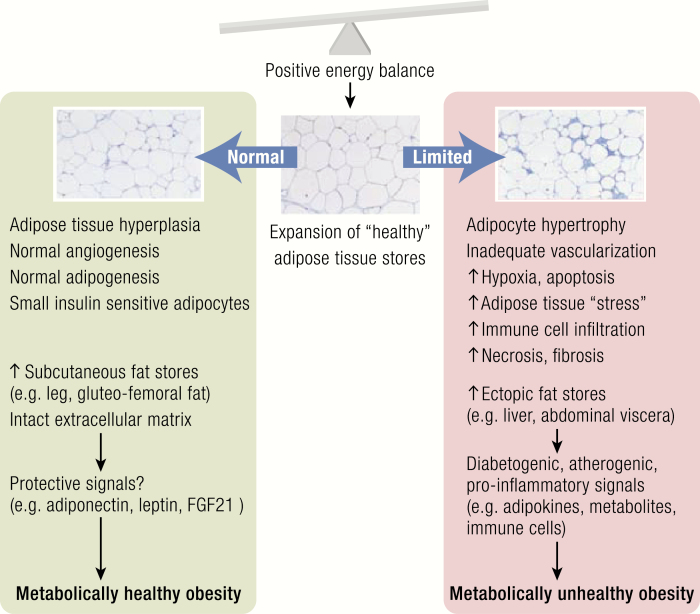Figure 3.
Adipose tissue dysfunction and development of metabolically unhealthy obesity. A chronically positive energy balance requires expansion of adipose tissue (AT) to store excess energy. Adipose tissue responds to higher storage demands by increasing the adipocyte number through adipogenesis from precursor cells (hyperplasia) and through adipocyte hypertrophy. If expansion of healthy fat stores (eg, subcutaneous leg fat) and the ability of AT to respond to excess calorie intake with (“healthier”) hyperplasia are impaired, AT dysfunction may develop, which is characterized by ectopic fat deposition (eg, liver, abdominal visceral depots, skeletal muscle, pancreas) and a sequence from adipocyte hypertrophy, hypoxia, inadequate vascularization, AT stress, and immune cell infiltration, apoptosis, and increased production of profibrotic extracellular matrix proteins contributing to fibrosis. Adipose tissue dysfunction leads to the release of proinflammatory, diabetogenic, and atherogenic signals (eg, adipokines, fatty acids from increased lipolysis, other metabolites, immune cells), which may contribute to end organ damage (eg, liver, skeletal muscle, pancreas, vasculature) and the development of metabolically unhealthy obesity. In contrast, healthy expansion of AT leads to metabolically healthy obesity through an increased AT storage capacity (serving as a safe “metabolic sink”) and the secretion of a beneficial adipokine profile (eg, adiponectin, FGF-21, leptin) (adapted from references (60, 61).

